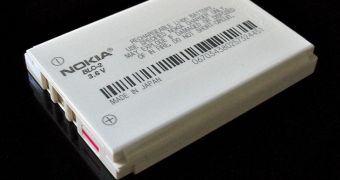Batteries are one of the essential blocks of portable technology, which is why there is always someone working on a better way to create them. After all, making the devices themselves efficient can only go so far.
Apparently, researchers took offense to the fact that laptops went from 3 hours to 6-8 hours of battery time just because of improvements to the CPUs and the rest of the hardware.
Batteries haven't really improved much over the past half a decade. We are still mostly using the same lithium ion batteries of days gone by.
Now, though, there is a new way to make them, thanks to a technique invented by a team of scientists from the University of Stanford.
In fact, the former US Secretary of Energy, Stanford's Steven Chu, believes that smartphones equipped with the new batteries could go for twice as long without losing all power supply.
How does it work? By means of denser, more efficient lithium in the battery's anode, the rod that discharges the electrons during the process known as electrolysis.
The negative pole, called a cathode, releases electrons, while the positive pole, the anode, absorbs them after they travel through the electrolyte, a solid or liquid loaded with positively charged lithium ions.
While the battery is charging, the positively charged lithium ions in the electrolyte are attracted to the negatively charged anode, while the lithium accumulates in the anode.
Right now, graphite or silicon is used for the anode, but researchers want to use lithium for it, as it can improve performance and charge life tremendously. However, lithium is too highly reactive with the electrolyte.
The main obstacle lies in the lithium's ability to expand almost infinitely relative to other materials, and also unevenly, which would cause cracks in the anode's surface. The resulting dendrites (hair-like growths) short circuit the battery and shorten its life.
In more layman terms, the lifespan of a battery can suffer when the chemicals in the electrolytic solution are left unchecked. That is why lithium, this “holy grail,” has stayed out of reach.
Now, though, the new technique applies a nanoscopic carbon shield around the cathode, compensating for that reactivity. In theory, battery life could not be just doubled, but even tripled if this is done properly enough.
The shield is made of interconnected carbon domes set on top of their lithium anode. The layer is called nanosphere and is said to address the other main issue of batteries: heat. The nanosphere layer (20 nanometers thick, 5,000 of them would be as thick as a human hair put together) resembles a honeycomb and is both flexible and non-reactive.
"The ideal protective layer for a lithium metal anode needs to be chemically stable to protect against the chemical reactions with the electrolyte and mechanically strong to withstand the expansion of the lithium during charge," says Yi Cui, a professor of Material Science and Engineering and leader of the research team.

 14 DAY TRIAL //
14 DAY TRIAL //